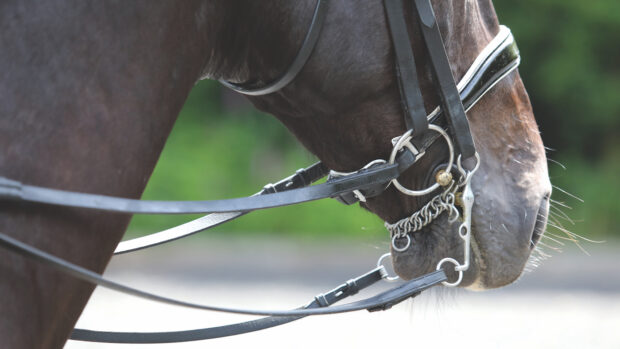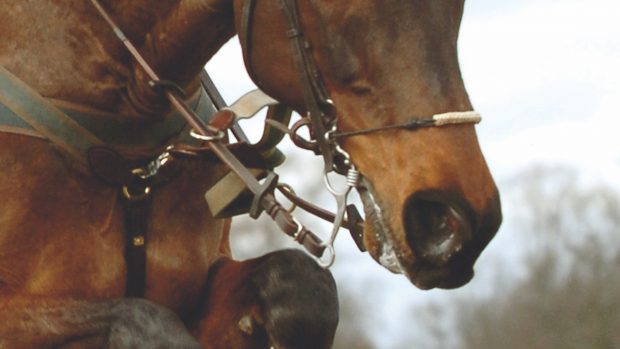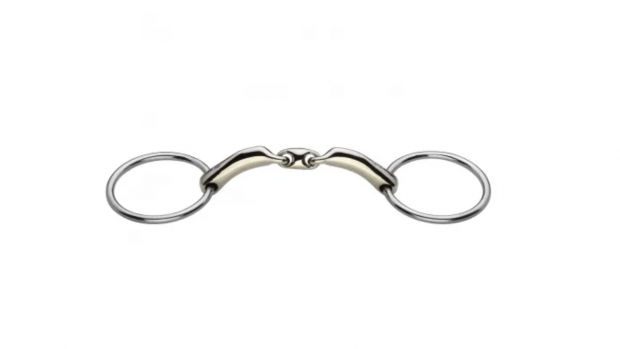The long shanks of Linda Tellington-Jones’s training bit might make it look as if it is designed to be severe – but the Canadian horsewoman and trainer says that the reverse is true. Its aim, she says, is to make the horse comfortable.
The Tellington Touch equine awareness method is based on non-habitual manipulation and groundwork. Linda’s methods have cured everything from bad loaders to pullers.
The training bit has sliding shanks, a ported mouthpiece to take pressure off the tongue and a copper lozenge to encourage the horse to play with the bit and soften. It isfitted with a curb chain with a leather strap at each end so that it can be buckled rather than hooked on, so avoiding the risk of curb hooks pressing into the horse’s face.
For English-style riding, the bit is usually used with two reins and a cavesson noseband; it should not be used with any noseband that fastens below the bit. Both reins are held on a light contact, rather than the top and bottom one being used in isolation.
Linda realises most riders prefer to use a snaffle, but believes that it is not always the answer.
“If a horse has become a puller or a shyer, or has become totally unresponsive to the snaffle, isn’t it better to use a bit that makes both rider and horse happier?”
The “Teamwork” centre in Britain is run by accredited teacher Kate Prentice. Details from Tteam Training UK, Springfield, Treyford, Midhurst, West Sussex GU29 OLD (tel: 01730 825650).




